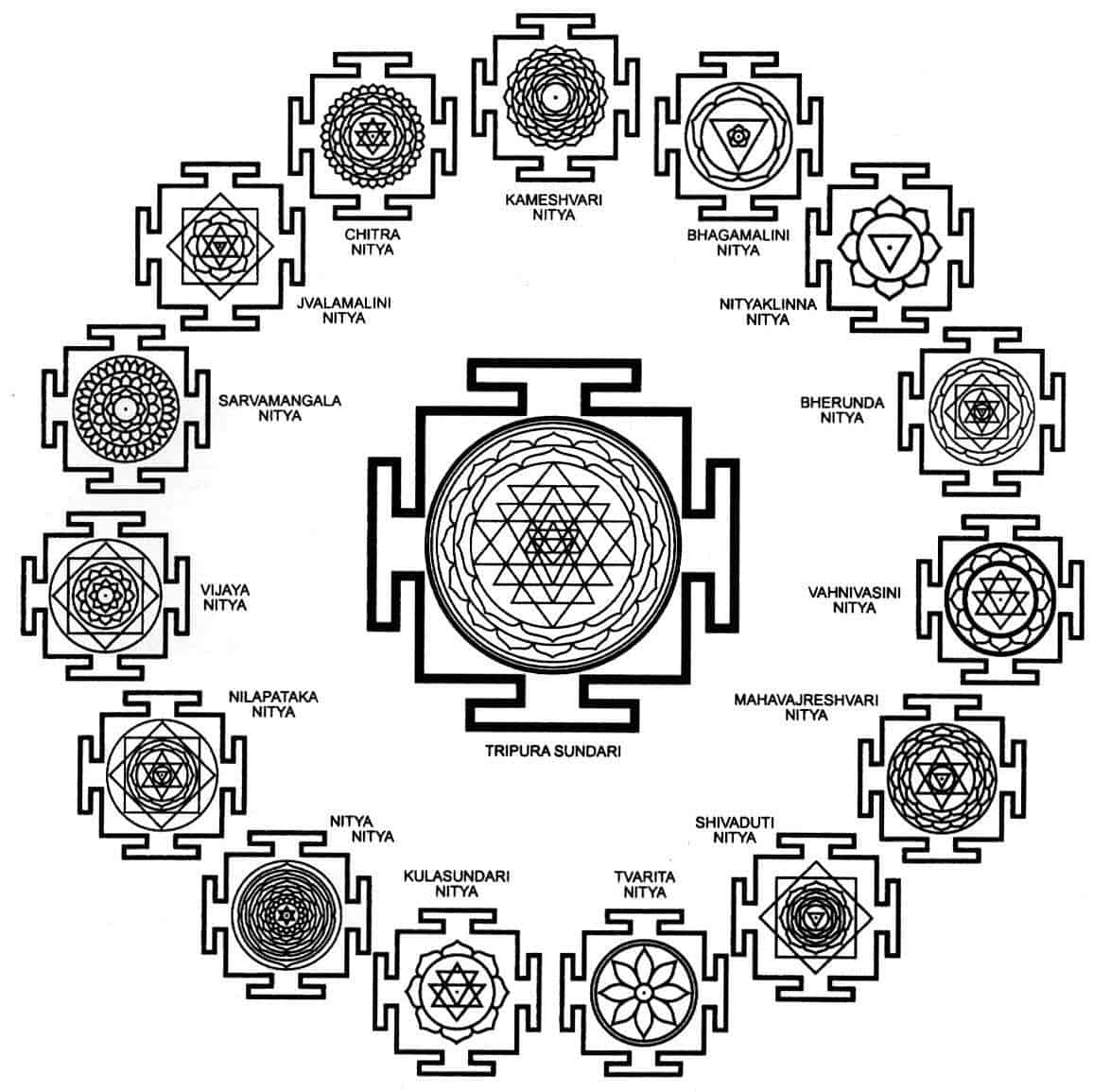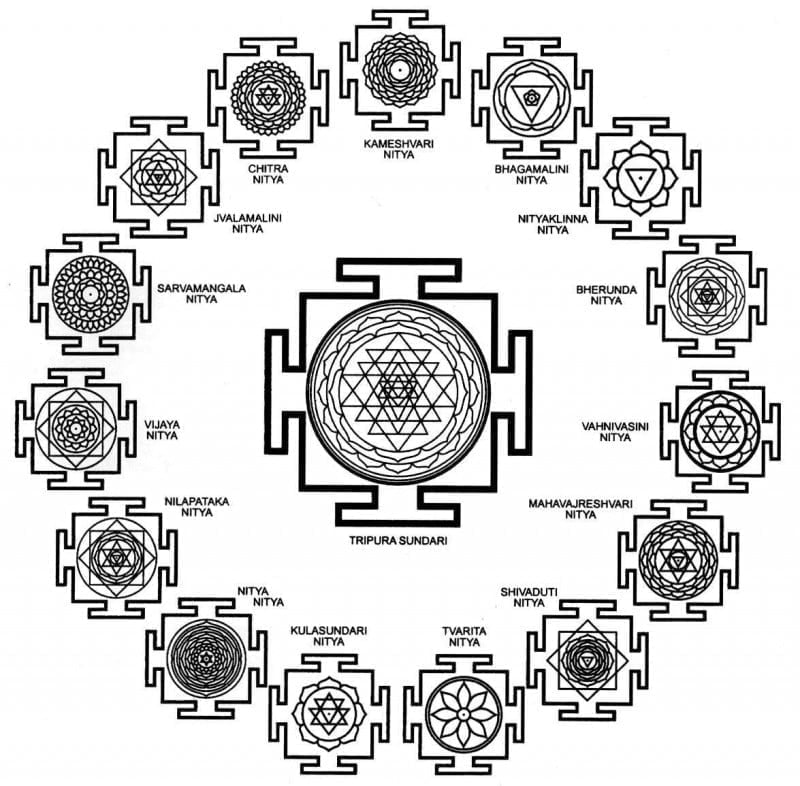 In Hindu metaphysics, the game of the event is supported by supreme divine energy Shakti That it is projected (expanding) in time and space; its sequential appearance is illustrated primarily by the 12 Kali-uri, but its position of supreme power that “feeds” and enlivens the entire universe with the sublime and beatific nectar (Soma) has 16 distinct facets (nitya(uri) which are very closely related to the stages of densification of the essential formative structures and energies of Creation.
In Hindu metaphysics, the game of the event is supported by supreme divine energy Shakti That it is projected (expanding) in time and space; its sequential appearance is illustrated primarily by the 12 Kali-uri, but its position of supreme power that “feeds” and enlivens the entire universe with the sublime and beatific nectar (Soma) has 16 distinct facets (nitya(uri) which are very closely related to the stages of densification of the essential formative structures and energies of Creation.
The term
nitya
means “eternality” or “permanence” and designates the Supreme Divine Consciousness or the Absolute. Traditional tantric symbolism associates these
nitya-s with Movement Cyclicthe most of the Moon, A Sun, as well as other planets. In fact, the secret science of nityait is also referred to as kala-vidya (the secret science of the essential quants of supreme energy).
In reality,
the kalas
represent the “rays” of the energy of time, the emanations by which eternity manifests itself in Creation.
Creative energy sequences (nitya-s, or Kala-s) of the Divine Emanation are found at all levels of manifestation, both macrocosmic (in all dimensions of universal manifestation) and microcosmic (at the level of the human structure).
On a human level,
nitya
there are many levels, nuanced in a very wide range of issues, but we can say, without fail – and the whole tantric tradition, especially the tradition Kakla stresses this – that the most effective and important way to awaken in our being, in a completely beneficial, sublime and divining form these creative energies is tantric amorous fusion, in which love, transfiguration and sublimation on the upper centers have an essential role.
Nitya-represents the first emanation of the Great Creative Divine Power (Parashakti), which in the tradition Kakla is usually assimilated (in the context of nitya-s) with Tripura Sundari. Although these energies manifest themselves over time, they belong to the categories of divine entities particularly elevated, which have totally transcended time (are eternal) and by which the human being can transcend the becoming and illusion of finite existence.
The 15 nityas that accompany at all times on the Adya Lalita Tripura Sundari which is 16th nitya) are associated with the rising phase of the month, respectively each nitya is associated with one of the 15 days (14 days of the month increasing and the 15th day is that of the Full Moon.)
The 15 Nityas can also be regarded as modifications of Lalita representing the red goddess with the three gunas and the five elements, namely the ether, air, fire, water and earth. Each Nitya has its own vidya (which is a mantra), yantra and group of energies (Shaktis). Their names appear in the first chapter of
Vamakeshvara
Tantra.
Each of Nitya has a certain number of arms, the totality of the arms (= rays) of the entire circle being 108. Since any unit of time is considered as a microcosm or a parallel of any other valid unit, each of the fifteen Nitya has 1,440 breaths (see Bhavanovanishad). This identity between space, time, Tripurasundari and individuality is highly elaborated by the author Tantraraja.
According to this text, Nitya are the vowels of the Sanskrit alphabet and are identical to both time and space. For example, if the number of tattves or consonants (36) is multiplied by the 16 Nityas, the number of letters is 576. Multiples of this number represent the number of years in the various Yugas.
source http://www.shivashakti.com/nitya.htm
